By Lee Atkinson
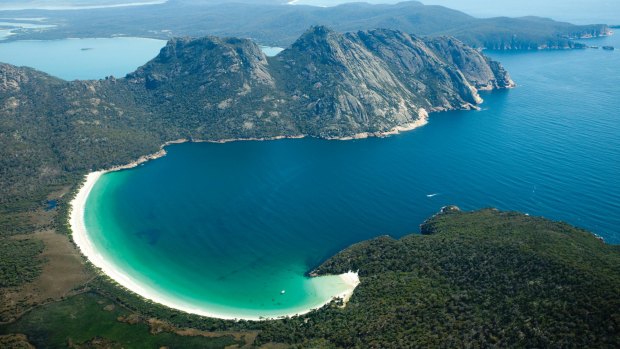
Freycinet National Park, Freycinet Peninsula, Tasmania.
We could have been French. On the shores of Botany Bay, where then Lieutenant James Cook first stepped ashore on the continent in 1770, is Frenchmans Bay, a beach named for one of the great might-have-been moments in history. French explorer Comte de La Pérouse landed here just days after the First Fleet in January 1788.
The French count stayed for six weeks in the area now known as La Perouse, building a stockade and establishing a small garden, before setting sail again for the south seas, never to be seen again. There's a monument on the headland and the museum in the historic 1881 Cable Station tells the story of the expedition, its encounter with the First Fleet and the mystery surrounding its disappearance.
In 1791 Bruni d'Entrecasteaux left France on a search and rescue mission to locate the lost La Pérouse. His journey took him across the Indian Ocean to Tasmania, then called Van Diemen's Land, and into the South Pacific before returning to France via the south-western coast of Australia. He failed to find La Pérouse, but he did discover a vast amount of Australian coastline, leaving behind a rich legacy of French place names including D'Entrecasteaux National Park (parks.dpaw.wa.gov.au), a wild and untouched place on the south-western tip of Western Australia that hasn't changed much since Bruni put it on the map. Most of it is inaccessible unless you have a four-wheel drive, but it's popular with anglers, campers and bushwalkers who come here for the long white sandy beaches flanked by imposing cliffs almost 100 metres high, hexagonal basalt columns that came from a volcanic lava flow 135 million years ago, jarrah and karri forests and wonderful wildflowers in spring.
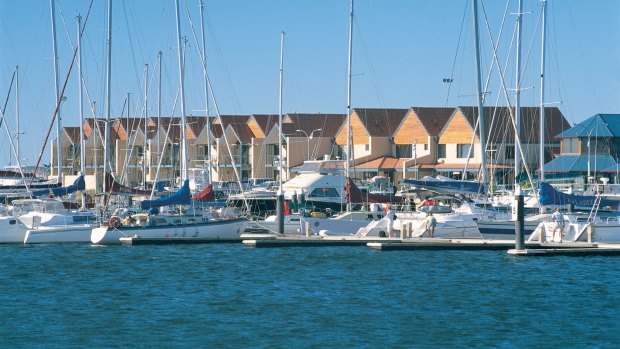
Geographe Bay Marina near Busselton, Western Australia.
Further east along the coast the pretty seaside port of Esperance (see visitesperance.com), famous for its dazzling white sand beaches and brilliant turquoise waters, was named after one of the two ships on the expedition. The 30km Ocean Road Loop along the coastline just out of town is one of the country's most beautiful short drives.
In Tasmania Bruni's name lives on, in Bruny Island south of Hobart (see brunyisland.org.au) and the D'Entrecasteaux Channel that separates it from mainland Tasmania. South of Hobart, the town of Huonville on the Huon River in the Huon Valley – the apple growing capital of the apple isle – was named in honour of the Admiral's second in command, Captain Huon de Kermadec.
Recherché Bay (see farsouthtasmania.com) near the far south-eastern tip of Tasmania is named after his other ship, La Recherche. The expeditioners set up a temporary village and scientific observatory on the edge of the bay and stayed for several weeks in 1792 and again in 1793, and the remains of a vegetable garden planted by the French not only as a resource for other sailors, but "for the benefit of Indigenous people – a gift from the French people to the natives of the new land", were unearthed by archaeologists in 2003. Surrounded by World Heritage wilderness it's just as wild and isolated now as it was back in 1793, when d'Entrecasteaux wrote: "It will be difficult to describe my feelings at the sight of this solitary harbour situated at the extremities of the globe, so perfectly enclosed that one feels separated from the rest of the universe. Everything is influenced by the wilderness of the rugged landscape. With each step, one encounters the beauties of unspoilt nature... Some of these trees seem as ancient as the world, and are so tightly interlaced that they are impenetrable."
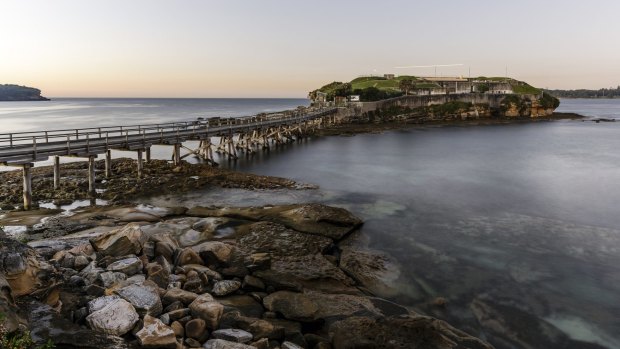
Sunrise at Bear Island off La Perouse, NSW.
The next major French exploring party to spend time in Australia was the Baudin expedition, with orders to try and find out if there was a strait between the New Holland (West Australia) and NSW and to claim Southern Australia, which they called Terre Napoleon, for France.
They hit the west coast first, and Cape Naturaliste and Geographe Bay near the wine producing region of Margaret River are both named after the two ships, Le Naturaliste and Le Géographe. Several places on the north-western coast still have French names including Faure Island and the Peron Peninsula, named after the expedition's zoologist who gathered more than 100,000 specimens creating one of the most comprehensive Australian natural history collections of its type. Francis Peron National Park (see parks.dpaw.wa.gov.au) is part of the Shark Bay World Heritage Area near Monkey Mia (home of a celebrated pod of wild dolphins that come into shore to be fed by visitors each day), which claims to shelter the largest number of species ever recorded in one place on the planet – from a cliff-top vantage point on the tip of Cape Peron you might be lucky enough to see turtle, dugongs, dolphins and manta rays.
Baudin headed next to Tasmania. The Freycinet Peninsula (see discovertasmania.com.au) on the east coast is named after the one of the two Freycinet brothers on board the ship. They named many more places along the south coast of Australia west of Wilson's Promontory, only to discover that Matthew Flinders had beaten them to the rest of the coast when they ran into him in what is now known as Encounter Bay (see tourismvictorharbor.com.au) near Victor Harbor on the Fleurieu Peninsula (named by Baudin) in South Australia; Baudin heading west, Flinders heading east.
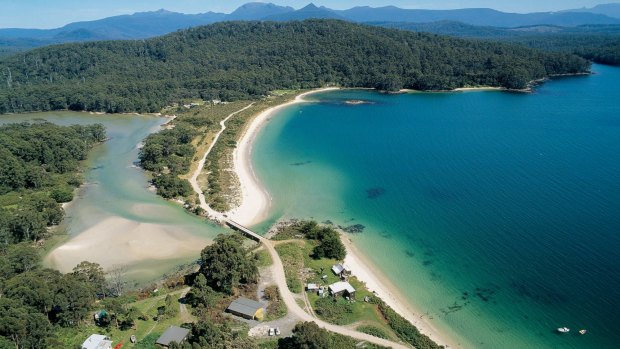
Recherche Bay, Tasmania.
England and France were at war at the time (François Peron is believed to have prepared a secret espionage report for Napoleon on ways to invade and capture the British colony at Sydney Cove), but despite this the meeting between the two scientists was friendly – Flinders was welcomed aboard Le Geographe, and he shared charts and swapped travel tips, like where to find fresh water on nearby Kangaroo Island and the Eyre Peninsula. Flinders named the bay after the get-together and you can explore its edge aboard the historic Cockle Train (Australia' first railway see steamrangerheritagerailway.org) between Victor Harbor, Port Elliot and Goolwa. Outside of school holidays the train only runs twice a week (usually on Wednesday and Sunday) so a good alternative if you've got bicycles with you (or walk a section of it) is the 30km Encounter Bikeway – from May to October you may be able to spot whales as you ride.
Between them, Flinders and Baudin were responsible for around 70 per cent of the names of Australia's coastal features, and even though the French maps were published three years before Flinders', many of the French names were later supplanted by the English ones chosen by Flinders by virtue of the fact that he got there first, but only just.
Once again, the French had only just missed out. If La Pérouse had only been a few days earlier Australia Day might well be celebrated with croissants and crepes, rather than beer and a barbie – but at least it would still be on the beach.
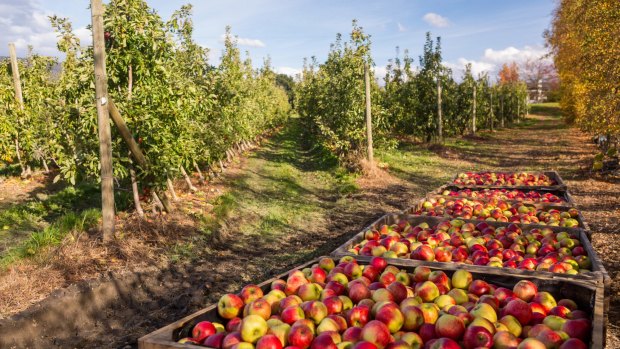
Apple orchard, Huon Valley, Tasmania.
AKAROA, NEW ZEALAND'S ONLY FRENCH SETTLEMENT
Our Kiwi neighbours share our French connections, with several French navigators and naturalists naming and charting the coastline. In 1840 a ship of French settlers aboard the Compte de Paris arrived on the Banks Peninsula (named by Cook, after his botanist, Joseph Banks), around an hour's drive south-east of modern-day Christchurch, to establish a French colony, only to find that the British had arrived first and had already claimed sovereignty.
The 60 or so settlers decided it was too far to go home, so stayed on to establish the harbour-side town of Akaroa (see akaroa.com), which still has French street names, and local restaurants pay homage to French cuisine. The architecture is a blend of British and French, with beautifully restored historic cottages brightly painted and festooned with flower boxes, and the main street is lined with quaint galleries and craft shops, cafes, bars and restaurants. The waters of the bay are a safe haven to the world's rarest and smallest dolphin, the Hector's dolphin.
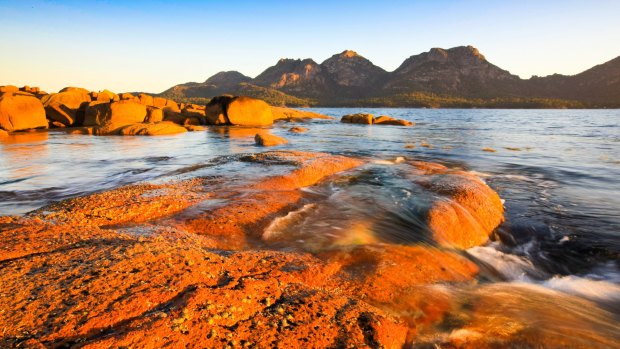
The Hazards, Freycinet, Tasmania.
According to the World Wildlife Fund there are only around 7000 Hector's dolphins left in the world and they are only found off the coasts of New Zealand, with the biggest populations found in the Akaroa area. Swimming-with-dolphin cruises, along with kayaking and sailing trips to see penguin and seal colonies, are big drawcards. But if you really want to savour la belle vie, head to one of the wineries overlooking the harbour. The first French settlers began making wine here almost as soon as they arrived, and the tradition is still going strong. It's easy to believe you are somewhere in Provence as you sip a chilled rose or cuvee blanc and gaze down at harbour below – Provence with a Kiwi twist that is.
Sign up for the Traveller Deals newsletter
Get exclusive travel deals delivered straight to your inbox. Sign up now.